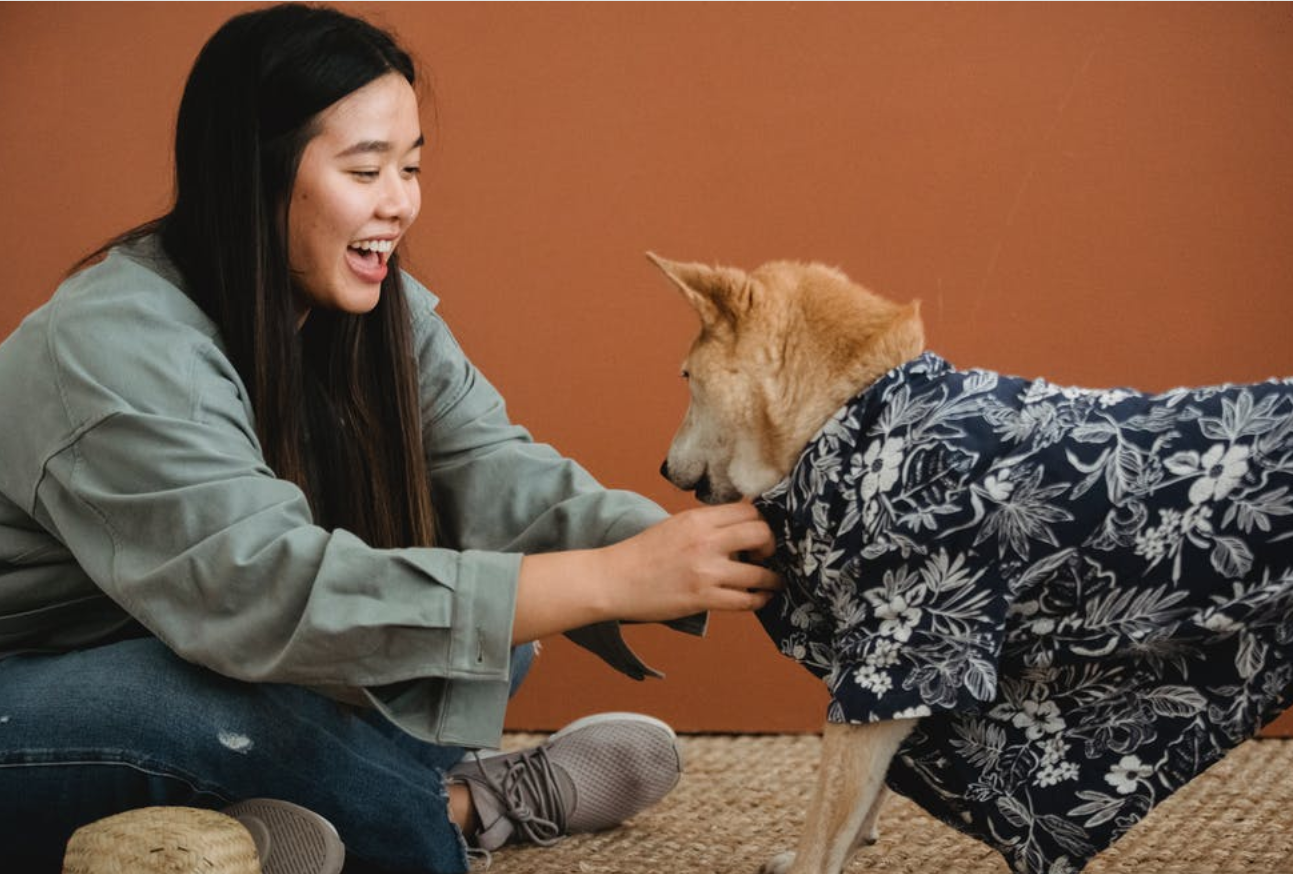Dressing Your Dog: Fashion with Functionality in Mind

Dressing your dog can be more than just a fun activity or a style statement. From keeping them comfortable in various weather conditions to protecting their skin, dressing dogs can serve several practical purposes. In this article, we’ll explore how to dress your dog thoughtfully, balancing fashion with functionality, and always prioritizing their comfort and safety.
Why Should You Dress Your Dog?
Though dogs come with natural coats, there are valid reasons to dress them, especially when their health and comfort are at stake:
-
Climate Protection: Certain breeds, particularly those with short fur or smaller bodies, may need an extra layer during colder months. A warm coat or sweater can help keep them cozy and prevent illnesses caused by exposure to cold temperatures.
-
Sun Protection: For dogs with light coats or sensitive skin, dressing them in lightweight clothing can protect their skin from sunburn during outdoor adventures.
-
Practicality in Bad Weather: Dogs love walks, but rain, snow, or muddy paths can make the experience less enjoyable. A raincoat or waterproof jacket ensures your pet stays dry, while reducing the time you’ll spend cleaning them afterward.
-
Style and Personality: Dressing your dog for special occasions or just adding some flair to their daily look can be fun. From festive sweaters to casual shirts, clothing allows you to express your dog’s personality in creative ways.
How to Choose the Right Outfit

Comfort is always key when dressing your dog. Here are some things to keep in mind when picking out clothes for them:
1. Fit Matters
A well-fitted outfit should neither be too tight nor too loose. It should allow your dog to move freely without causing discomfort. Measure your dog’s chest, neck, and back length before choosing a size to ensure a good fit.
The materials also play a major role. Look for soft, breathable fabrics like cotton for everyday wear, or fleece for colder conditions. Avoid rough materials that could irritate your dog’s skin.
2. Seasonal Considerations
Dressing your dog should always align with the current weather:
-
Cold Weather: In winter, dogs with less fur or smaller breeds might benefit from an extra layer like a wool or fleece sweater. These materials offer warmth without being too bulky.
-
Rainy Days: A waterproof raincoat is a great addition to your dog’s wardrobe. Not only does it keep them dry, but it can also prevent mud from sticking to their fur.
-
Hot Climates: In the summer, lightweight and breathable clothing, like a loose-fitting cotton t-shirt, can protect dogs from the sun without trapping heat.
3. Safety First
While style is fun, safety is non-negotiable. Avoid clothing with small parts like buttons, which could become choking hazards. Clothes should not cover or obstruct your dog’s eyes, ears, or legs, and should not interfere with their natural movements.
Make sure there are openings for the leash to attach to your dog’s harness or collar. If your dog is new to clothing, introduce them slowly, starting with simple garments like t-shirts, so they can get used to the feeling.
4. Dress for the Occasion
Whether it’s Halloween, Christmas, or just a day at the park, dressing your dog for specific occasions can be entertaining for both of you. Costumes or themed outfits are popular choices, but it’s important not to go overboard. Ensure that the costume is lightweight and non-restrictive so your dog remains comfortable.
Keep in mind that not all dogs enjoy wearing elaborate costumes. Some may tolerate a quick photoshoot, while others may become stressed. Always prioritize your dog’s happiness over the fun of the outfit.
Footwear: Protection for Your Dog’s Paws

While clothing may be optional, footwear can be essential for dogs in certain situations:
-
Winter Protection: Snow and ice can be harsh on paws, and salt used on icy roads can irritate or even damage them. Booties can provide a protective barrier, keeping their paws warm and safe.
-
Hot Pavements: During summer, asphalt can get dangerously hot. Booties help protect sensitive paws from burns.
-
Rough Terrain: If you enjoy hiking or walking on rough paths with your dog, sturdy booties can protect their feet from sharp rocks and debris.
When selecting booties, make sure they fit snugly but comfortably. Some dogs may need time to adjust, so introduce them gradually by letting them wear the boots for short periods until they feel more comfortable.
Signs Your Dog Is Uncomfortable
Some dogs love the extra warmth and attention, while others may find it uncomfortable. Be mindful of their reactions:
-
Are they constantly scratching or trying to pull off the clothing?
-
Do they seem reluctant to walk or move?
-
Are they panting excessively, even in cool conditions?
If your dog shows any of these signs, it’s best to remove the clothing.For dogs that don’t enjoy wearing full outfits, simple accessories like a bandana can be a stylish alternative that doesn’t cause discomfort.
Practical Tips for Choosing the Right Dog Outfit
While dog clothing serves multiple functions, it’s crucial to choose the right kind of outfit based on your dog’s needs and comfort. Here’s what to keep in mind when selecting clothing for your pet:
1. Fabric is Key
Different fabrics serve different purposes, and what works best depends on the weather and your dog’s specific requirements:
-
For Warmth: Fleece, wool, or thermal materials are excellent choices for cold-weather clothing. These fabrics trap heat while still allowing your dog to move comfortably.
-
For Sensitive Skin: Opt for soft, natural fabrics like cotton or bamboo, which are hypoallergenic and breathable, reducing the risk of irritation.
-
For Rain and Wind: Waterproof and wind-resistant materials are essential for keeping your dog dry and comfortable in bad weather. Look for jackets that have sealed seams and a hood to protect your dog’s head and back.
2. Fit for Function
A poorly fitted garment can cause irritation, restrict movement, or even pose a choking hazard. Here’s how to ensure a good fit:
-
Measure Accurately: Take your dog’s measurements, including the chest, neck, and length from the base of the neck to the base of the tail. Many brands offer sizing charts to help you pick the right size.
-
Check Mobility: After putting the outfit on, observe your dog. They should be able to walk, run, sit, and lie down without any restrictions. The clothing should never cover or block your dog’s eyes, mouth, or ears.
3. Consider Climate and Activity Levels
The kind of clothing your dog needs depends heavily on the climate where you live and their activity levels:
-
Active Dogs: Dogs that are always on the move might benefit from lightweight, flexible clothing that doesn’t restrict their activity. If you’re going for a hike, a protective vest can help shield them from burrs, thorns, or insects.
-
Cold Climates: Dogs in colder regions will benefit from multi-layered clothing that keeps them insulated without overheating. Adding boots to their wardrobe is also a great idea to protect their paws from ice, salt, or extreme cold.
-
Hot Climates: In warm weather, clothing isn’t always necessary, but light and breathable options like cooling vests or UV-protective shirts can help shield sensitive skin from the sun and prevent overheating.
Dressing Puppies vs. Adult Dogs

Puppies and adult dogs may have different reactions to clothing, and it’s important to approach dressing them in ways that suit their age and temperament:
-
Puppies: Introduce clothing gradually. Puppies are naturally curious and may try to chew or remove outfits at first. Start with something simple like a lightweight t-shirt or bandana and slowly introduce more complex outfits.
-
Adult Dogs: Older dogs, especially those who’ve never worn clothing before, might need more time to adjust. Use treats and positive reinforcement to create a comfortable, stress-free environment when dressing them.
Making Special Occasions Fun
Dressing your dog for special events like birthdays, holidays, or family gatherings can be a delightful way to include them in celebrations. However, make sure the clothing you choose is comfortable and appropriate for the situation. Consider these ideas:
-
Costumes: Whether it’s a themed party or Halloween, costumes can be fun as long as your dog is comfortable. Avoid anything that covers their face or restricts their movement. Lightweight costumes that focus on simplicity are often the best.
-
Seasonal Gear: For festive holidays like Christmas or New Year’s, you can opt for sweaters, scarves, or bow ties to match the season. Just remember that your dog’s comfort should always come first.
Footwear: An Often Overlooked Essential
While clothing is often top of mind, many dog owners overlook the importance of footwear, especially in extreme weather or tough terrains. Dog boots protect paws from hot surfaces, icy sidewalks, or sharp objects like rocks and glass. Here’s what to look for:
-
Durability: Choose boots with a non-slip sole for extra grip, especially if you plan to walk on slick or rocky surfaces.
-
Comfort: The boots should fit snugly, but not too tight. Test them indoors first to ensure your dog can walk normally before heading out for longer excursions.
Introducing boots may take some patience, as not all dogs immediately take to wearing footwear. Practice with short walks and gradually increase the time to get them used to it.
Conclusion
Dressing your dog is about more than just cute outfits; it’s a thoughtful way to care for their comfort, health, and safety. Whether you’re gearing up for a cold day, protecting sensitive skin, or simply adding some personality to your dog’s look, the right clothing choices can improve their overall well-being. By selecting appropriate fabrics, ensuring a good fit, and considering your dog’s unique needs, you create a positive experience that benefits both you and your pet. Dressing your dog is a way to strengthen the bond, keeping them happy, comfortable, and ready for any adventure that comes your way.



